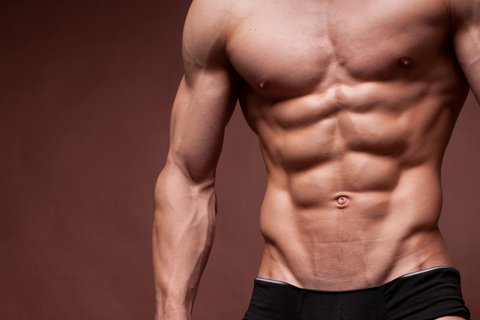The Anatomy Of A Great Abs Workout
by Matt Hodges
27 February 2015
 When it comes to bodies and working out, everyone has his or her problem area. For many of us though, it’s a safe bet to assume that our focus is on improving our abs.
When it comes to bodies and working out, everyone has his or her problem area. For many of us though, it’s a safe bet to assume that our focus is on improving our abs.
High sugar or high-fat diets will naturally cause weight to settle around the middle, cushioning the abdominal muscles with an unhealthy spare tire or two. Needless to say, it is much easier to gain this weight than to lose it, and it’s even harder to hone that coveted six-pack. So, how do you get an abs workout that will see significant results? Read on to find out…
Get your diet right
Firstly, it’s important to realise that a lean and well-defined six-pack is as much a product of nutrition as the exercise involved to achieve it. Being able to see your abs means you need to be lean.
There are dozens of myths and ‘quick fix’ solutions out there, promising to help you get the abs of your dreams in record time. As with any health and fitness advice – if it sounds too good to be true, it probably is! Quick fix solutions are no substitute for regular, intensive training and following a proper diet.
Which exercises should you be doing, and when?
When selecting abs training exercises, think multi-planar and complete demanding activities that keep your repetitions below 20 per set.
Regular training is vital, whether you are looking for a model six-pack or simply a flat tummy. But should you perform abs exercises at the start of your workout or the end? Should you dedicate a whole session to abs-only, or scatter mini-abs sessions into your routine?
Here are the abs workout options…
Abs training at the START of your workout
There’s a lot to be said for getting a session done and dusted at the beginning of your workout. If you are committed to your abs training, this is the only way to ensure that you don’t run out of energy (or time) before you get to the main bulk of your workout. And there is another benefit to starting a training session with abs work – any exercise that engages the spine will help to improve your flexibility, making cardio work much easier. However, if you are planning to follow your abs training with some lifting work, be very careful as any variation in the spine’s stability can lead to injury. Ask your trainer for advice on this.
Abs training in the MIDDLE of your workout
Non-stop cardio can be gruelling and boring for even the most dedicated gym bunny. Doing a few ab exercises in between sets can make your workout more enjoyable. This method is also an excellent solution for time-poor fitness fanatics – if you can squeeze in a set of planks in between sets of Lat pull downs, you are maximising your workout time.
The key here is planning – think ahead about your workout regime, and don’t overdo it.
Abs training at the END of your workout
There is a school of thought that believes that you will get the best results if you perform your abs exercises after your regular cardio or strength session. The idea is that your heart rate will raise, leaving all your muscles looser. After your cardio, you should still have enough energy left to do a few sets of ab focussed exercises.
It’s important to leave yourself sufficient time at the end of your workout for abs training – you should perform core exercises slowly and purposefully, and this requires focus.
Abs training on a separate day
If you want to hone those abs, dedicate a full session to abs work. A designated day will allow you to focus on other areas during your regular sessions, and you will see results much faster. Top tip? Warming up before your abs workout ensures that you minimise your risk of injury.
What’s the best time to train your abs?
It depends on you! At The MPH Method, we make sure that all of your exercise as well your abs training is designed around your needs and goals, as well as your experience and current fitness level. We don’t just follow a single training template or use a “one size fits all” approach to exercise. There are various “best times” for abs training. It depends on what you need and what your personal trainer thinks is best for you.
That said, the following exercises, we feel are the best for your abdominal development (in order of importance):
- Hanging Knee Raises
- Palloff Presses
- Low To High Cable Woodchops
- Plank To Press Up
- Turkish Get Ups
You’ll notice there are no crunches in here. Crunches are quite possibly the worst ab exercise you can do for when you are starting out. The emphasis on the neck and the ‘foetal’ nature of the position does nothing for your posterior chain. For those that can activate the core well, you can try kneeling cable pull down crunches but again the top five ab exercises still reign supreme.
This article was written by Matt Hodges, you can see all his articles here.





